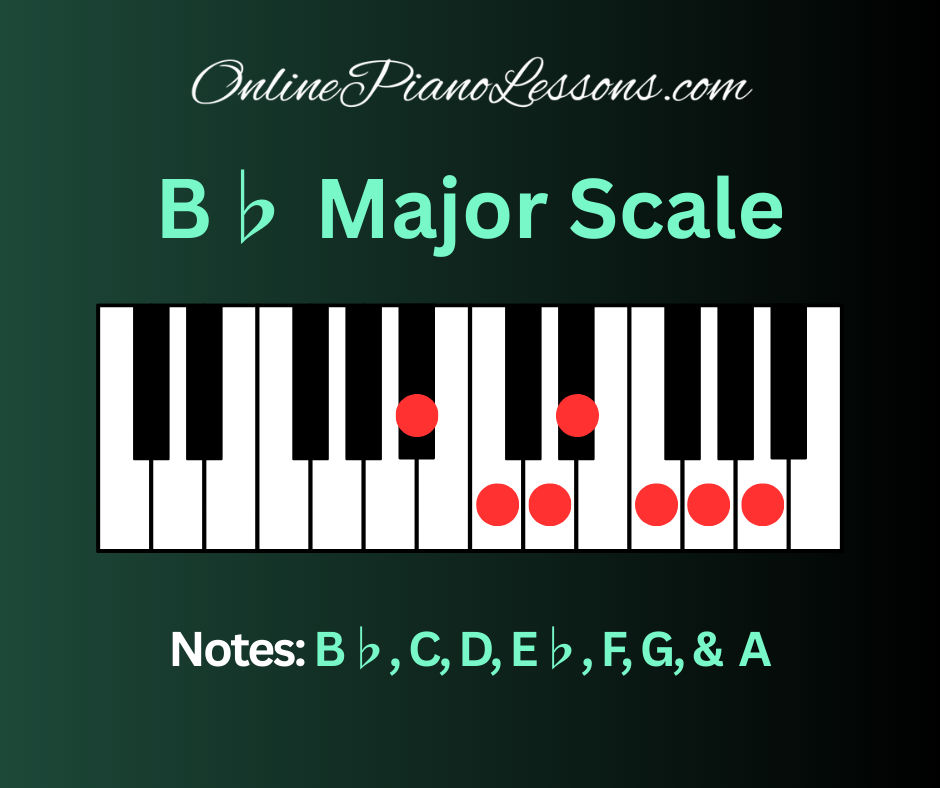
The B flat major scale is a vibrant and cheerful scale that is widely used across classical, jazz, and contemporary music. Known for its bright and warm sound, the B♭ major scale is an essential scale for pianists of all levels. Whether you are learning scales for technique, improvisation, or composition, mastering the B♭ major scale is crucial for developing musical fluency on the piano.
This comprehensive guide will cover everything you need to know about the B flat major scale, including how to locate it on the piano, its theoretical structure, its sound and character, and practical tips for practicing and mastering it.
What Is the B Flat Major Scale?
The B flat major scale is a diatonic scale that begins on the note B♭ and follows the traditional major scale pattern of whole and half steps. Its key signature contains two flats: B♭ and E♭. This makes the B♭ major scale accessible for beginners while providing a rich tonal palette for more advanced pianists.
The notes of the B flat major scale are:
- B♭
- C
- D
- E♭
- F
- G
- A
- B♭ (octave)
The interval pattern for a major scale is:
Whole – Whole – Half – Whole – Whole – Whole – Half
Understanding this pattern allows you to construct any major scale on the piano, including the B♭ major scale, by applying the same sequence of steps.
How to Find the B Flat Major Scale on the Piano
To play the B♭ major scale on the piano, you first need to locate the B♭ note. B♭ is the black key immediately to the left of B. Starting from B♭, follow the major scale pattern:
- B♭
- Whole step to C
- Whole step to D
- Half step to E♭
- Whole step to F
- Whole step to G
- Whole step to A
- Half step to B♭ (octave)
By following this pattern, you can confidently play the B♭ major scale across the keyboard, developing familiarity with both the black and white keys.
The Importance of the B Flat Major Scale
The B♭ major scale is essential for several reasons:
- It strengthens hand coordination and finger independence
- It helps understand major scale theory and harmony
- It is widely used in jazz, classical, and popular music
- It prepares pianists for reading music in flat key signatures
- It serves as the foundation for improvisation and composition
Its bright, uplifting sound makes the B♭ major scale an ideal choice for teaching beginners and for creating music that feels joyful and clear.
Chords Derived from the B Flat Major Scale
Understanding the chords built from the B♭ major scale is critical for playing harmonies and accompanying melodies on the piano. The primary triads are:
- I (B♭ major): B♭ – D – F
- ii (C minor): C – E♭ – G
- iii (D minor): D – F – A
- IV (E♭ major): E♭ – G – B♭
- V (F major): F – A – C
- vi (G minor): G – B♭ – D
- vii° (A diminished): A – C – E♭
These chords form the backbone of common progressions in the B♭ major scale, making it easier to accompany melodies or compose music in this key.
What the B Flat Major Scale Sounds Like
The B♭ major scale is widely recognized for its bright, warm, and cheerful sound. When played on the piano, it feels fluid due to its simple combination of black and white keys. Pianists often describe the scale as:
- Happy
- Bright
- Harmonically rich
- Smooth
- Balanced
Its pleasing sound makes it popular in a variety of genres, from classical and jazz to pop and marching band music. Understanding its tonal character allows pianists to better interpret music written in B♭ major.
Famous Works in B Flat Major
Several notable pieces utilize the B♭ major scale, showcasing its versatility and bright character:
- Mozart’s Piano Concerto No. 22 in E♭ major, K. 482 (features B♭ major passages)
- Chopin’s Polonaise in B♭ Major, Op. 71 No. 2
- Jazz standards like “Take the A Train” (Duke Ellington) often modulate to B♭ major
- Popular songs and marches frequently use B♭ major for its clear, uplifting quality
Studying these pieces helps pianists internalize the B♭ major scale while developing technique and musical expression.
How to Practice the B Flat Major Scale on the Piano
Practicing the B♭ major scale effectively involves a combination of technique, accuracy, and musicality. Here are some tips:
1. Use Correct Fingering
Proper fingering ensures smooth transitions across the keyboard.
Right Hand (one octave):
2 – 3 – 1 – 2 – 3 – 4 – 5 – 1
Left Hand (one octave):
5 – 4 – 3 – 2 – 1 – 3 – 2 – 1
Using consistent fingering is crucial for developing muscle memory for the B♭ major scale.
2. Start Slowly
Focus on accuracy before speed. A slow tempo ensures precise notes and clean technique.
3. Use a Metronome
Maintaining a consistent rhythm helps strengthen timing and coordination.
4. Practice Hands Separately
Building independence in each hand allows for smoother performance when combining hands.
5. Include Arpeggios
Arpeggios based on the B♭ major scale improve finger agility and reinforce harmonic understanding.
6. Add Musical Phrasing
Create short melodies within the scale to develop musical expression and improvisation skills.
Common Mistakes When Learning the B Flat Major Scale
Even experienced pianists can encounter difficulties with the B♭ major scale. Common mistakes include:
- Misidentifying flat notes
- Using inconsistent fingering between hands
- Rushing and sacrificing accuracy
- Ignoring proper wrist movement
- Skipping arpeggio practice
Avoiding these mistakes ensures smoother and more confident playing of the B♭ major scale on the piano.
Why Pianists Should Learn the B Flat Major Scale
Mastering the B♭ major scale offers numerous benefits for pianists:
- Enhances hand coordination over black and white keys
- Strengthens understanding of major key theory
- Builds foundation for improvisation and sight-reading
- Prepares pianists for classical, jazz, and contemporary music
- Develops technical skills like speed, accuracy, and finger independence
Whether you are a beginner or an advanced pianist, learning the B♭ major scale is a key step in developing comprehensive piano skills.
FAQ
How many flats are in the B♭ major scale?
The B♭ major scale has two flats: B♭ and E♭.
Is the B♭ major scale hard to play on the piano?
It is relatively easy, especially for beginners, due to the simple combination of black and white keys.
What chords are derived from the B♭ major scale?
The main chords are B♭ major, C minor, D minor, E♭ major, F major, G minor, and A diminished.
Why is the B♭ major scale important for beginners?
It strengthens hand coordination, reinforces major scale theory, and is commonly used in classical, jazz, and popular music.
Can the B♭ major scale be used for improvisation?
Absolutely. Pianists often use it for melodic improvisation, chordal accompaniment, and creating expressive solos.





 Hi, I'm Thomas, Pianist Composer,
Hi, I'm Thomas, Pianist Composer,  I love playing piano, creating new melodies and songs, and further developing my online piano course and making updates/additions to my site OnlinePianoLessons.com!
I love playing piano, creating new melodies and songs, and further developing my online piano course and making updates/additions to my site OnlinePianoLessons.com!  Now that is what I call fun!
Now that is what I call fun!





